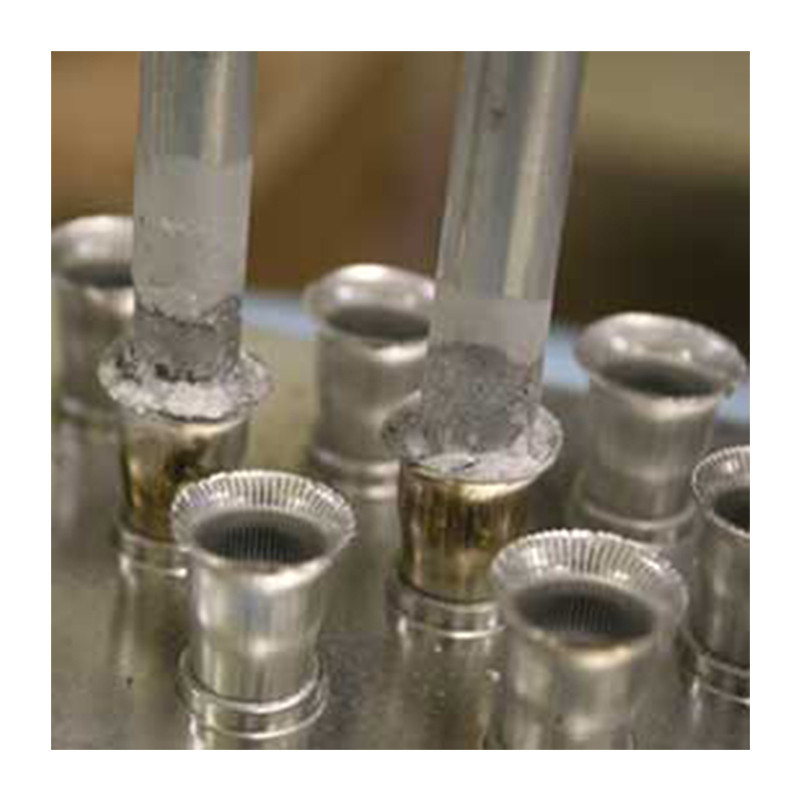

Musisz być zalogowany/a
Category


Zdjęcia mają charakter wyłacznie informacyjny. Zobacz specyfikację produktu
please use latin characters
Тверде паяння — це процес з'єднання металевих елементів за допомогою припоїв зі сплавів металів з температурою плавлення вище 427 °C, але нижче температури плавлення з'єднуваних частин. Ця техніка дозволяє з'єднувати як однакові, так і різні метали.
Паяні з'єднання:
Тип припою, що використовується у процесі твердого паяння, залежить від деталей, що з'єднуються. Найчастіше застосовують мідно-фосфорні, срібні, алюмінієві, мідні, нікелеві та кобальтові припої.
Сучасне індукційне нагрівальне обладнання забезпечує надійне, безконтактне та енергоефективне нагрівання за мінімальний час без використання полум'я. Час одного циклу індукційного нагріву значно коротший у порівнянні з паянням за допомогою полум'я, тому за той самий проміжок часу можна обробити більше деталей із меншим тепловиділенням в навколишнє середовище. Індукційне паяння дозволяє контролювати час, температуру, фіксацію та положення частин, що робить процес повторюваним і забезпечує однаковий кінцевий результат.
Напівпровідникові системи здатні нагрівати дуже малі ділянки в межах точних допусків виробничого процесу без порушення індивідуальних металургійних властивостей. Для великих обсягів або процесів з високими вимогами до якості, деталі можуть паятися індукційно в інертному середовищі без флюсу і дорогих очисних процедур, що знижує рівень окислення.
Jesteś zainteresowany tym produktem? Potrzebujesz dodatkowych informacji lub indywidualnej wyceny?
Musisz być zalogowany/a
Тверде паяння — це процес з'єднання металевих елементів за допомогою припоїв зі сплавів металів з температурою плавлення вище 427 °C, але нижче температури плавлення з'єднуваних частин. Ця техніка дозволяє з'єднувати як однакові, так і різні метали.
Паяні з'єднання:
Тип припою, що використовується у процесі твердого паяння, залежить від деталей, що з'єднуються. Найчастіше застосовують мідно-фосфорні, срібні, алюмінієві, мідні, нікелеві та кобальтові припої.
Сучасне індукційне нагрівальне обладнання забезпечує надійне, безконтактне та енергоефективне нагрівання за мінімальний час без використання полум'я. Час одного циклу індукційного нагріву значно коротший у порівнянні з паянням за допомогою полум'я, тому за той самий проміжок часу можна обробити більше деталей із меншим тепловиділенням в навколишнє середовище. Індукційне паяння дозволяє контролювати час, температуру, фіксацію та положення частин, що робить процес повторюваним і забезпечує однаковий кінцевий результат.
Напівпровідникові системи здатні нагрівати дуже малі ділянки в межах точних допусків виробничого процесу без порушення індивідуальних металургійних властивостей. Для великих обсягів або процесів з високими вимогами до якості, деталі можуть паятися індукційно в інертному середовищі без флюсу і дорогих очисних процедур, що знижує рівень окислення.
Your review appreciation cannot be sent
Report comment
Report sent
Your report cannot be sent
Write your review
Review sent
Your review cannot be sent
